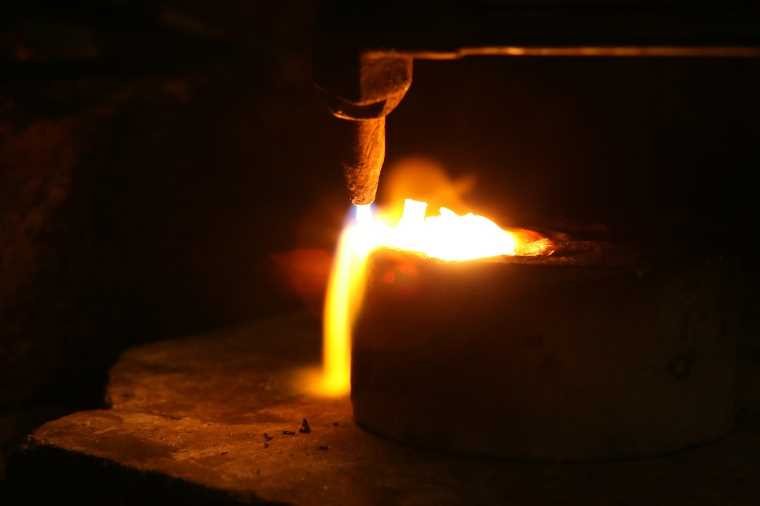A breakthrough process using a nanoscale material coating on target materials offers ultra-precise control over fire, according to newly-published research.
Numerous industrial processes utilize the unique properties of fire, but controlling where and how the flames deliver their heat is still a challenge. If proven effective, the new process could lead to additional breakthroughs in materials science and engineering, affecting a wide range of commercial industries.
“Fire is a valuable engineering tool – after all, a blast furnace is only an intense fire,” explains Martin Thuo, a professor of materials science and engineering at North Carolina State University and one of the authors of the paper outlining their process. “However, once you start a fire, you often have little control over how it behaves.”
Specifically, directing the heat of a fire to precise locations and at precision temperatures for customized fabrication remains a challenge, especially when working with flammable or delicate materials. Now, Thuo and his researchers say they have developed a novel process that allows them to exert significantly more precision control over fire, particularly in how fire delivers its heat energy during the fabrication process, opening up a whole new world of customized material fabrication.
Nanoscale Materials Divert and Channel Fire’s Heat Energy
Called inverse thermal degradation (ITDs), the process outlined in their published research involves coating the material you want to expose to fire for manipulation with a nanometer-thick layer of specific molecules. In this case, the researchers used a material known as alkyl silanes. Normally constructed using single atoms of silicone connected to form a sheet, alkyl silanes have an almost magical property when it comes to their interaction with fire; they turn into glass.
“Our technique, which we call inverse thermal degradation (ITD), employs a nanoscale thin film over a targeted material,” explains Thuo. “The thin film changes in response to the heat of the fire and regulates the amount of oxygen that can access the material. That means we can control the rate at which the material heats up – which, in turn, influences the chemical reactions taking place within the material.”
“Basically, we can fine-tune how and where the fire changes the material,” he adds.
For example, if, as the researchers suggest, one takes a strand of cellulose fiber and exposes it directly to fire, it will simply burn up. But if that same material is covered in a layer of alkyl silanes, something unexpected happens. The outer surface of the nanoscale layer burns off, but the heat transforms the inner layer into glass. More significantly, this glass layer manages the oxygen, and thus heat, that is allowed to conduct to the fiber. So, instead of burning away immediately, this control over fire means the fiber smolders slowly.
“Without the ITD’s protective layer, applying flame to cellulose fibers would just result in ash,” Thuo says. “With the ITD’s protective layer, you end up with carbon tubes.”
Carbon tubes are especially valuable in certain industrial applications, including things like filtering oil, and are just one of the unique materials this process can help manufacture.
Small is the New Big in exerting Control Over Fire
In commercial applications, the researchers say they can control the thickness of the carbon tube walls by manipulating the size of the cellulose fibers they coat in alkyl silanes. As a result, they can limit the oxygen and heat that reaches a specific material, resulting in unprecedented control over fire at a macro and micro scale.
“We can engineer the protective layer in order to tune the amount of oxygen that reaches the target material,” said Thuo. “And we can engineer the target material in order to produce desirable characteristics.”
While the process is new and more work will be needed to perfect it, the researchers feel they have already shown enough success in exerting control over fire to begin planning their next efforts.
“We have several applications in mind already, which we will be addressing in future studies,” Thuo says. “We’re also open to working with the private sector to explore various practical uses, such as developing engineered carbon tubes for oil-water separation – which would be useful for both industrial applications and environmental remediation.”
Christopher Plain is a Science Fiction and Fantasy novelist and Head Science Writer at The Debrief. Follow and connect with him on X, learn about his books at plainfiction.com, or email him directly at christopher@thedebrief.org.

